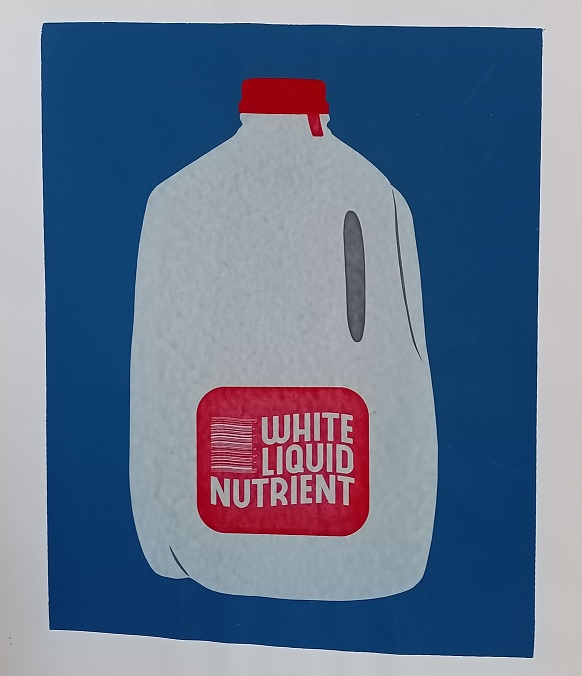Title. We keep ours at 75F, parents do 77F, and in laws 68F. It made me curious what everyone else keeps theirs at?
WHAT THE HELL IS A FARENHEIT 🇪🇺🇪🇺🇪🇺🇪🇺🇪🇺🇪🇺🇪🇺
You guys can control the temperature in the summer?
Right? I’m over here looking at my thermostat set to Off.
Username checks out.
Tried to set ours here to around 20°C (~70°F), but it barely even reaches 23°C (~74°F) even in the middle of the night. I still consider myself lucky being able to run the AC for most of the day though, so I’m not complaining.
They never seem to be very accurate even if it thinks it’s reached 20c
Even more so since my AC’s thermostat is located just inside the air intake. Perhaps it registers a far lower temperature than the rest of the room. It’s easily compensated though by setting the thermostat lower than the target ambient temperature (here, it’s 25°C or 77°F), I guess.
In australia reverse cycle ac is very common, so we keep ours set to ~24°C year round.
Europe.
Winter 20C/70F, but we only heat the bedrooms or rooms we mostly stay in. Kitchen, etc. can go as low as 10C/50F
Summer: no heating/AC at all. Open a window when cold air is coming inside. Close the windows when hot air is coming in. It’s never gone above 35C/95F, and that’s during a heat wave. Usually it’s 25C/80F max.
Sometimes when it’s too cold. You wear a sweater and thick socks. Sometimes it’s hot. Fan or live with it. Adapt our schedules accordingly, perhaps do groceries when it’s super hot or go on an errand that requires the car a drive so we can cool down in the supermarket/AC.
It’s never gone above 35C/95F
I think I speak for 99% of the people here when I say “FUCK THAT”
Some of us do enjoy hot weather. I hardly ever use my air conditioner.
That happens quite often for me inside, it really sucks. Not much I can do about it though.
I think I misunderstood him. I assumed he meant that the inside of his house was 95, but I think he meant that the outside was 95. Still anything over 80 indoors I can’t handle.
Edit: nope just read his other reply and it was 95 inside. Again, fuck that.
Yeah, it sucks. AC is very uncommon in residential housing so there is not much you can do, especially if you’re like me with a hot computer in the house. Without a computer it’s still way to hot but it’s better.
Optimally you open your windows but you might not always want to do that, since there are quite a few insects outside. During night the mosquitos are fucking everywhere, so leaving a window open is possible, but it’s risky.
would a remote screen and kb/mouse setup solve it?
The climate’s fucked and inflation is rampant.
You’re frankly better off getting used to the occasional hot day.
It’s hot, but you get used to it.
It’s hot, but you get used to it
I’m not sure it will stay true in Europe. I think we might start to see more and more deadly heatwave, with temperatures to high to get used to it.
My view change on AC because of that, I used to think it was a luxury but it might become a necessity.
On the other hand fans can greatly improve the “efficiency” of AC, I’m comfortably sleeping with a fan and the AC thermostat setup at 28°C.
Ah. But that 35C was when it was above 40C. It was already extreme for northern europe.
If we ever head towards 50C, I suspect I’ll be dead before then, there’s always the basement. That’s ten or more degrees less than under the roof.
As climate change accelerates, and energy prices increase, we’ll have to adapt. Because when the power increasingly goes out, or when you end up paying hundreds per month on electricity, you’re fucked in a poorly insulated house even with AC.
It’s not environmentally friendly, it’s increasingly unaffordable, and it’s not sustainable on a societal level.
Not American. What’s a thermostat?
The electronic thing on the wall that controls the temperature of your heater or air conditioner.
older ones are often electrical, but not really electronic. they use a bimetal strip that bends due to changing temperatures, to complete a circuit at the point you set the slider. it’s actually a really fascinatingly simple bit of tech.
Mine growing up used a bit of mercury in a sealed vial mounted to that bimetallic strip.
any idea what the mercury was for? something about getting the heat in and out of the strip faster maybe?
The Mercury is in a glass tube with two wires and the tube is attached to the bimetallic strip in such a way that the motion of the Mercury due to gravity as the strip moves will close the circuit between the two wires. The Mercury is just being used a liquid conductor.
Yeah, sorry. It was the switch! Two wires on one side. When the capsule tilts from the strip/coil it makes the electrical connection.
that is fascinating, thank you and @metheos@feddit.de for the elaboration. quite clever.
Only God knows
It controls your furnace and air conditioner in your house
Thermostat isn’t an American term.
Google search would have answered that.
It’s what controls the furnace or air conditioner in your house. That way you can control how hot or cold your house is.
That depends. For example in a lot of Europe there aren’t any air conditioners in houses, so it only controls heating.
deleted by creator
69° all year round. It’s nice.
Nice
Nice
I have been involved in many of these types of discussions, and I’m convinced that we are not experiencing the same temperatures when we set our thermostats to the same temperature. If I set mine any lower than 77°F, I would freeze to death. But many people here set theirs to below 70°F.
I have a few hypotheses.
-
Apparently AC units can really only make the temperature about 20-25°F degrees colder than the outside ambient temperature. It is over 100°F in my area almost every day from June to mid September, so any temperature below about 78°F just means your AC is on 100% of the time. This is removing moisture from the air, making it feel colder.
-
My thermostat is right next to my garage door, which is not insulated. This is probably where the majority of heat enters the house. So the thermostat thinks it is warmer than it is. Other people might be in similar or opposite situations and need to set their thermostats to account for that.
-
People’s AC units are not actually cooling anywhere near those temperatures. The unit is just on 100% of the time at those temperatures, and they could realistically increase the temperature a great deal and get the same results.
-
Humidity.
-
Some people’s AC units/thermometers just suck. 65°F on their unit actually gets the space to the same temperature as 75°F on my unit.
Number 2 has merit. Here are a few more.
-
Most thermostats do require calibration, and nobody has time for that. This has a similar effect to your second point. Proper air flow (or lack thereof) throughout the home is also important.
-
Sunlight makes a huge difference. A temperature that feels comfortable at night may not feel comfortable at noon in a home with a lot of natural light. Same as a sunny vs a cloudy day, indoors or outdoors.
-
Men and women have drastically different tolerances for comfortable room temperature. In general, non-menopausal women tend to appreciate a slightly warmer room than men. This plays out in office spaces all over the world, with many women running space heaters under their desks.
-
Clothing obviously makes a huge difference. Some people prefer to dress for their desired temperature; others prefer to dress for their physical comfort and let the HVAC balance things out accordingly.
-
Medical conditions and medications and diet can all drastically affect one’s body heat output. For example, anything that boosts serotonin is likely to make one run hot. Stimulants will constrict blood vessels and make one cold, especially in the extremities. And we all know what alcohol does (dilates blood vessels, allowing more heat to escape the body, lowering one’s body temperature despite actually making them feel warmer). Blood sugar levels make a difference. The list is endless.
But it’s interesting that most of your thought process went into how HVAC systems and humidity work, versus the simple fact that the people themselves are just drastically different (see points 3 through 5).
-
This is removing moisture from the air, making it feel colder.
That’s not how humidity works. Higher humidity means that cooler temperatures feel much colder and warmer temperatures feel much warmer. Even the heat index calculation shows this. Just try it out for yourself, or look at the formula. https://www.weather.gov/epz/wxcalc_heatindex
People’s AC units are not actually cooling anywhere near those temperatures. The unit is just on 100% of the time at those temperatures, and they could realistically increase the temperature a great deal and get the same results.
I don’t know why you think this. Maybe you only have a single stage AC or maybe you’ve never actually measured the temp with an extra thermometer, but you can get the ac 40-50°F cooler than outside, both by removing humidity (which decreases the “feels like” temp) but also through actually heat removal from the house. You might just have bad insulation as well.
If you live in a dry climate you can do the opposite. Pump humidity in using a swamp cooler, which places moisture in the air and then immediately causes it to evaporate carrying heat with it in the state change. You’re cooling the air slightly and since moisture exaggerates temperature changes it feels cooler to you.
My thermostat is right next to my garage door, which is not insulated. This is probably where the majority of heat enters the house. So the thermostat thinks it is warmer than it is.
I’ve got an Ecobee thermostat and they sell little temperature sensors that you can place anywhere in your house. You can configure which sensors are used at which time - for example I have a sensor in my bedroom, and configured it to only look at the bedroom temperature overnight. If you select multiple sensors, it averages them.
It’s a decent solution to this problem.
Yeah, those are all good points and certainly factor in. There are objective studies about human comfort preferences used for building design. I expect OPs question is a roundabout way to ultimately ask about comfort preferences.
Studies done on temperature preferences are also biased (like medicine studies or calorie recommendations). Office building studies were based largely on the preferences of white men. Not even accounting for individual preferences someone being in a different “category” (i.e. gender) may also influence at what temperature they are most comfortable.
-
This is a trap to identify the Fahrenheit users for future re-education, isn’t it?
21C in the winter. 23C in the summer. Well at least these are the settings during the daytime. During sleeping hours they are set to 19C in the winter and 25C in the summer.
Winter: 20°C when home/awake, 17°C when out or asleep. Before kids we used to drop it to 15°C at night. It was glorious
Summer: 22°C when home awake or asleep, 26°C when away for longer period, 24 for short periods
That’s interesting. When away from home I set a minimum temperature to avoid pipes freezing in the winter, but why do you put the AC on a max temperature when away from home?
Yeah that doesn’t seem very efficient to make the AC work so much harder when you return home.
It’s apparently a good thing to do: https://www.carrier.com/residential/en/us/products/air-conditioners/best-temperature-for-ac/
Maybe because the house is naturally warmer during the day when you’re not home, and it will cool down on its own before you come home. But idk, I don’t own an AC.
I have a brand new apartment. On recommendation of the constructor (new walls contain lots of moisture that needs to go out), it’s set a little warmer than I’d usually go: 21C (70F). In my old place I’d put it at 18C (64F).
That said, currently it’s 25C inside (77F). This place is insulated like crazy, and we don’t have AC (that still isn’t common over here, even for new builds). For reference, current temperatures outside are 14C (57F)
I live in the Netherlands.
In the UK here, have you guys had a cool, wet summer too? And if so have people (not necessarily you as it seems you live in a modern well insulated home) needed to put the heating on? I’m in a flat in a late 1800s building and have put it on a couple of times to take the chill off, my mum’s in a 1920s semi detached and has had the heating on most days.
Our weather is nigh-identical to that in south-eastern England. I mean, after all, coast to coast theres only 100km between us. We’ve had a normal summer. Perhaps “cool” by today’s standard, but even on average for the last 30 years it’s been a normal summer.
June in fact was exceptionally sunny and dry. July indeed was a nothingburger, mostly rain rain and more rain. August was a mix, some good days some bad. What we didn’t have this year was any 35+ temperatures.
21C in the winter and 19C in the summer
Why not just set it to 20 all year long?
Because celcius sucks for environmental temperature
I mean I don’t really care what temperature is based on but exactly what does 77 degrees exactly refer to in that it is better or worse than any other number?
It means it’s 77% hot
Or you can learn both and just be better educated…you could try that.
It’s not about learning or not. It’s about 1 system being fundamentally less suited for the task. You wouldn’t argue that we should all be using kelvin. I mean, you could argue that, but you wouldn’t be right.
Yes Celsius certainly seems more natural.
Not for human centered climate, where 0-100F is a very convenient set of human centric temperatures. 0 is really cold, 100 is really hot
Where is freezing? That is a pretty important one particularly for driving or freezing pipes? So 40 is really hot, 20 is decent, 0 is freezing and -20 is cold and -40 is really cold. And water boils typically around 100.
I mean, ignoring zero in Calvin, it is all arbitrary when it comes to temperature. Just celsius likes to land some key numbers on human centric values.
You are talking purely out of ignorance. The majority of the population on Earth are getting on just fine using celsius with none of the problems you claim to exist.
Also “really cold” and “really hot” are purely subjective terms which varies a lot from person to person and from location to location.
You just described Celsius, you idiot.
What a bizarre claim.
18 in summer or off and 22 or off in winter
Western suburbs of Chicago, IL. Summer it’s 77-79f (25-26c). Winter it’s 65-69f (18.3-20.5c).
In summer we open the windows at night and let the cooler air in and when the sun comes in I close the windows and run a dehumidifier to quickly bring down the relative temp upstairs especially. Helps a bunch.
When our new kid comes I will have to def adjust these numbers much closer to 72f (22c).
I was talking to friends who live nearby and essentially keep it at 72f (22c) year round and almost never open their windows they were using like 1040kwh-1600kwh per month last month where we were using 309kwh or about 50 bucks a month. This was for July. I think we may be the weirdos and we will have to get more on their level with a newborn.
Massive shout-out to you for converting it
My heating is set at 21°C (70F) for daytimes and 16°C (61F) for the night time, so it doesn’t come on at all during summer, and a lot of spring (UK). During winter when it gets colder out (like below about 6°C/43F) I will usually need to whack it up by a couple of degrees, or give it a little extra blast in the morning to warm up. Its an old building (late 1800s) and my flat has external walls on three sides, and a cold empty basement below, so it can get quite cold when the outside temperature drops.
Edited to make it clear i mean my heating thermostat, because I realised most people here are talking about AC and that’s very rare in homes here.
83F day 78F night. These temps are mainly chosen to not give my AC a heart attack.
During the winter I’m pretty hands off and will let it get down to 20-30F and just layer up next to a small space heater.
20 - 30F?! You have no water pipes??
If it does get down below freezing it’s usually not for long. And once I’m up and moving and have a space heater on its probably in the 50s by the afternoon.
I live in an RV - you kind of just work with the weather you get.
deleted by creator





















